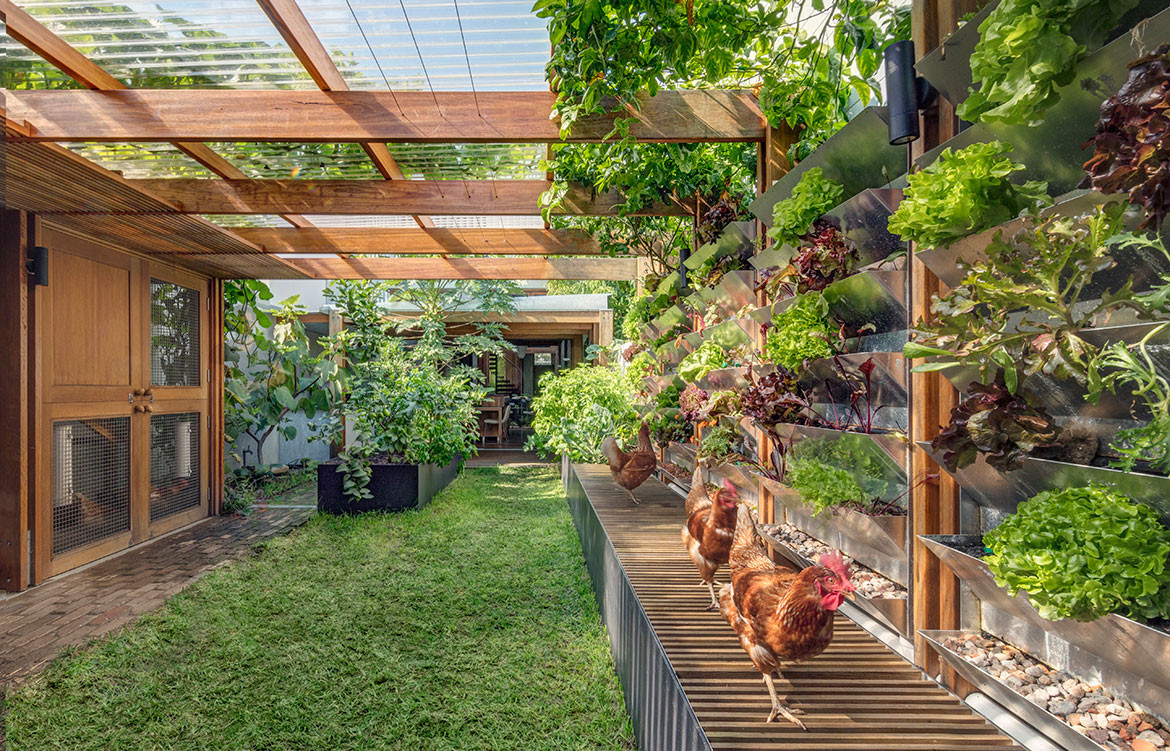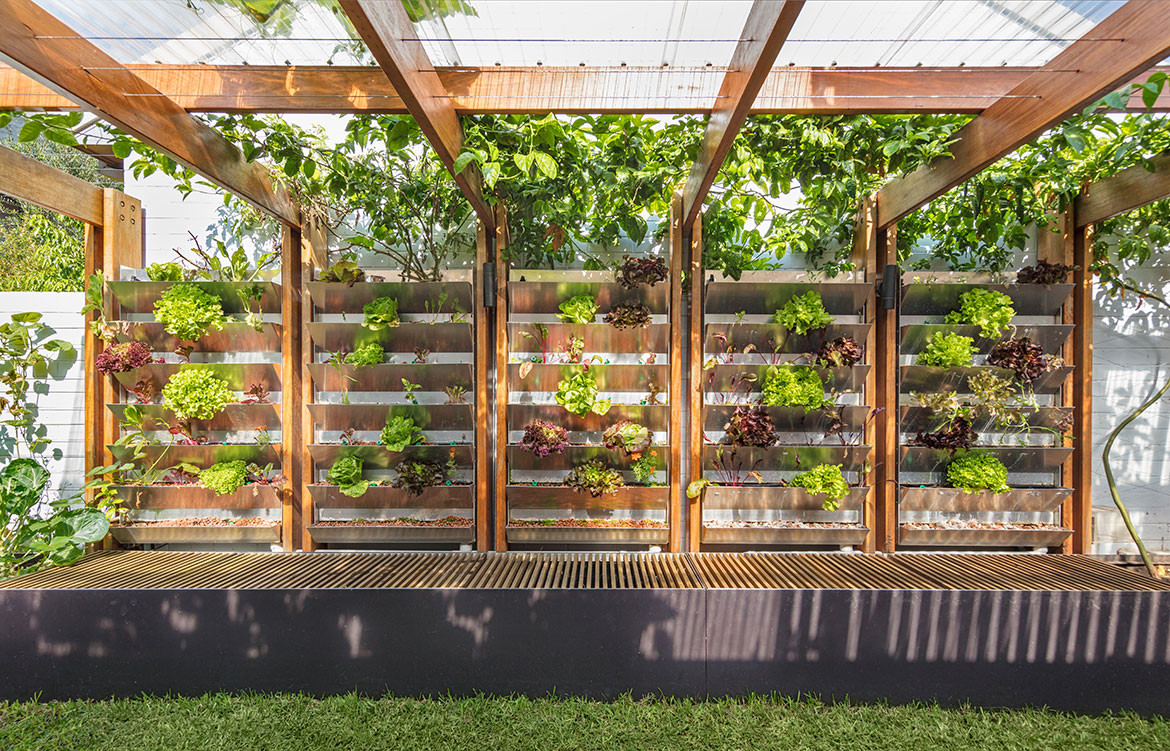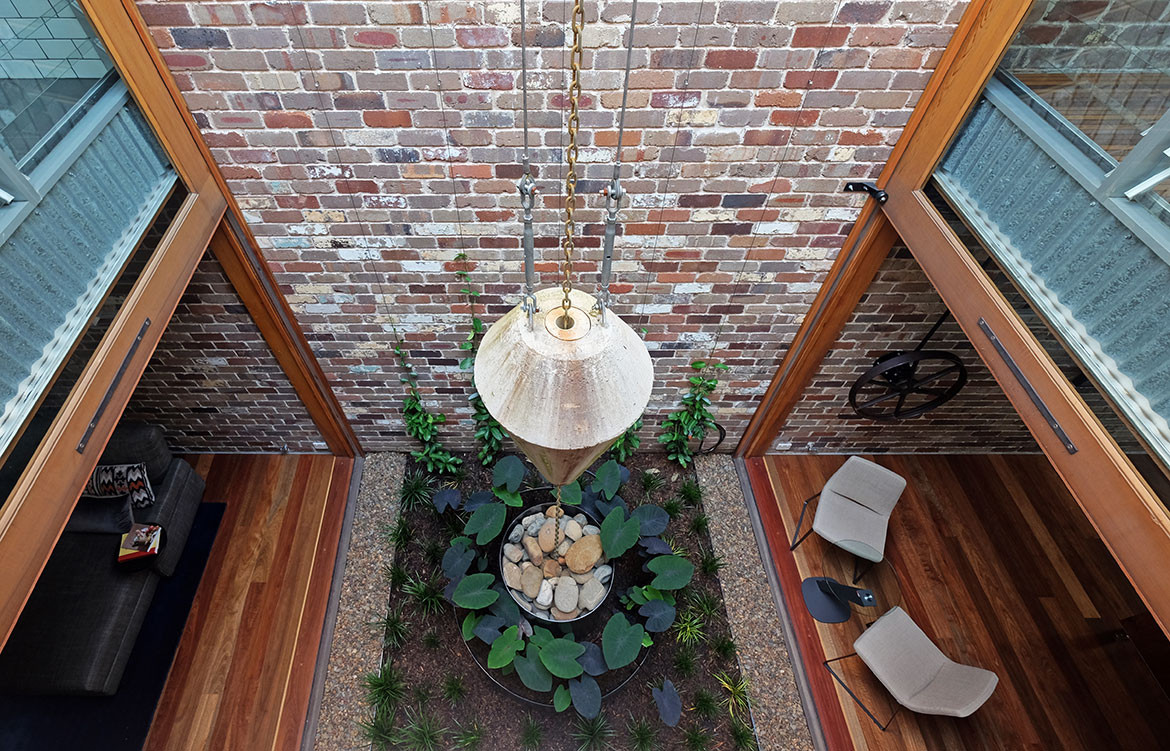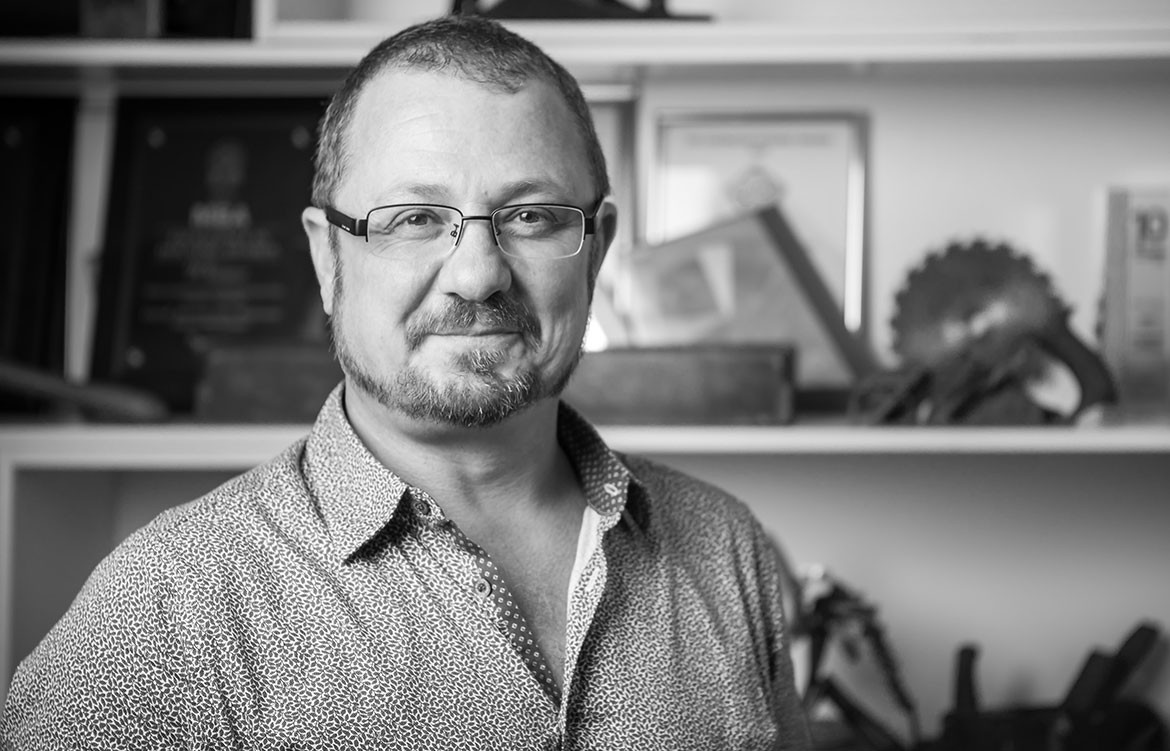What is your definition of sustainability in relation to your work?
Sustainability is holistic. From the manner in which work is procured; to how the work is managed, administered and built; who builds it and how far they travel; how long it takes to build and the materials used; the quality of the build, how long it will stand the test of time and the maintenance and servicing requirements. And, of course, the very obvious reduction or complete negation of consumption of services for the building using solar, wind, water technology and systems.
How has the practise of producing sustainable architecture evolved?
In addition to the above considerations, we have evolved our practice to include permaculture design principles and aquaponics integration methodologies in some of our recent projects. We now have two projects which allow the occupants to produce and harvest their own vegetables, fruit, eggs and fish on site in addition to and in combination with traditional solar and water harvesting.
How do you educate your clients about producing responsible and sustainable homes?
Whilst we provide some additional insights for our clients, it is not really our responsibility to educate them with respect to sustainability. I find clients either care or they do not, and we are lucky that the latter group tend not to approach us in the first place. We provide a service which provides architecture, construction and sustainability solutions to educated clients. What we do educate our clients about, is the value of each aspect of sustainability, where the best aspects of their project are worth investing, how much to spend and generally how much will be returned in the short, medium and long term. Return on value does not always relate to money. There are many things more valuable in a family home than money in my opinion.
Are clients more or less educated and enthusiastic in addressing the challenges and opportunities?
I have seen a steady increase in educated and enthusiastic clients with respect to sustainability over the past decade. It would be fair to say that a client not interested in any aspect of sustainability is almost non-existent, at least in our client base.
What is the real cost equation? When it comes to a question of money, do we really save by committing to sustainable practices?
That is a very broad question and there is no simple answer to this other than to say that the cost of not committing to sustainable design and buildings practices will likely be paid by our children and future generations.
Perhaps a very specific scenario may shed some light on this question: We recently assessed the cost value (only) between installing 5000L or a 10,000L water tank for a couple on a very small terrace house in Sydney. Considering the cost of buying water from the town supply, their predicted household usage and the cost to supply and install the tank to capture rainwater we determined that a 5000L tank would take 11 years to pay off and a 10,000-litre tank would take 77 years to pay off. This is a pure cost-based value assessment. I would personally still prefer to install the 10,000-litre tank, perhaps even 20,000 litres and share the stored water with my neighbours.
How do you educate yourself about the evolving technology in a constantly shifting landscape?
There are numerous government and industry sources that can keep you up to date and dealing with consultants and suppliers day in day out is particularly advantageous as both an Architect-Builder. Unfortunately, the architectural industry is so far removed from the cost, project management and construction process that it is increasingly difficult for the industry to make informed decisions in any respect let alone advising clients about sustainability technology on a holistic basis. Battery technology has probably been the most difficult technology to keep up with in recent times and to be honest it is difficult providing informed advice to clients. At present we are recommending that battery storage be provisioned and for the client to determine whether batteries are needed once their household running costs are known after taking occupation.
What data, processes and systems do you use to design and build sustainably?
The statutory required systems such as BASIX and NatHERS only determine minimum requirements. International certification systems such as LEEDS and Green Star provide too much weight on a buildings performance once it is built. I see no point delivering buildings that cost the earth 100 years of embodied energy to reduce consumption of services by only 50 years compared to standard building types. There are so many aspects to data, processes and systems available that the only real way to capture the sustainability of design and building is to carry out full life cycle assessments. There are consultants who can provide these assessments although they are cost prohibitive at even a medium scale project, so we must rely on data, processes and systems suitable on a project by project basis and this must be done in consideration of our client’s budget.
Passive design principles, water tanks, solar capture, door & window systems, insulation, air-conditioning, low embodied energy materials generally, fast track construction methods, sustainable material source selection, construction quality & longevity and low maintenance are very straight forward topics to discuss with a client and are really the low hanging fruit of sustainability that any architect should be able to advise a client on using readily available information online. These are the bare minimums we consider in our projects.
How can architects better communicate the message that sustainability should be intrinsic to architecture and not a mere “add-on”?
With great difficulty. Architects have polarised our service offering from the mass market over the past 50 years and we have become incredibly image-centric in terms of what we offer and indeed what we celebrate. The fact that architecture award systems have special categories for sustainability is an obvious sign of how fundamentally twisted our priorities are as an industry. I believe the only way to communicate that message given the framework we are working in is by putting the proof in the pudding. We need to make sustainability not only an intrinsic part of our services but an equally sexy part of our architecture product. There needs to be a symbiotic relationship between architecture, construction and sustainability. None of these things are mutually exclusive although each industry presently perceives them to be as such.
CplusC
cplusc.com.au



Aquas Perma Solar Firma


